The Friday Edition
Our Friday News Analysis | What the World Reads Now!
Helping to Heal a Broken Humanity (Part 49)
The Hague, 29 August 2025 | If you know of a decisive story, tell the world! We're still searching.

EDITORIAL | Are World Leaders Dumb, Stupid, Sociopaths, or Psychopaths, or All of the Above (Part 13)?
Click here for Part 1
Click here for Part 2
Click here for Part 3
Click here for Part 4
Click here for Part 5
Click here for Part 6
Click here for Part 7
Click here for Part 8
Click here for Part 9
Click here for Part 10
Click here for Part 11
Click here for Part 12
By Abraham A. van Kempen
29 August 2025
The Paradox of Security: The Chicken or the Egg?
The ageless question—“What comes first, the chicken or the egg?”—is often posed to provoke thought. Yet, for those whose minds wander in the confines of an asylum, the question escapes comprehension, highlighting the bounds of reason that separate sense from nonsense.
Global Leadership and Security
Recently, President Trump convened a group of world leaders, described as lunatics by many, in the Oval Office. They sought reassurance and a security blanket from the United States. This event, marked by political theatrics, demonstrates how even heads of state can act in ways that nearly verge on lunacy. They aimed to prolong their proxy war by aligning themselves with ‘Daddy’ Trump, elevating him as their make-believe leader. They try to steer Mr. Trump to follow in their reckless and insane footsteps, dragging the U.S. deeper into their follies. President Trump is not stupid. Unlike his European counterparts, he won’t play Russian Roulette, risking our lives and triggering World War III.
Russia’s Perspective on Security
The Russian people have seen this movie before. Russia, the largest country in Europe and the world, has historically faced similar threats along its borders. Its ongoing conflicts with neighboring powers—once with Napoleon and Hitler, and currently with NATO—highlight its constant effort to ensure its security. How can Russia have its cake and eat it, too? President Putin doesn't want Ukraine to become his Vietnam. What steps must he take to restore the status quo ante, thereby returning to the situation as it existed before 2014?
Ukraine and Russia are not enemies of each other. Instead, they are two countries navigating their own paths, and understanding this helps foster a more peaceful perspective on their relationship.
Why does radical nationalism in the West want a defeated, divided, disillusioned, and crippled Russia?
The West remains enraptured by its rich imperial and glorious past, reflecting a deep-seated fascination that shapes its self-perception and legacy (lunacy).
- What is ours is ours. What is yours is ours also.
- It’s either our way or the highway.
- If you don’t do it our way, you’re dead meat.
The Path to Mutual Neutrality
Ultimately, security—whether for individuals or nations—raises questions about trust and neutrality. Often, mutual neutrality serves as the best guarantee, offering a means to break the cycle of seeking protection from real or imagined threats.
Enjoy your weekend,
Sincerely
Abraham
BUILDING THE BRIDGE FOUNDATION, THE HAGUE
A Way of Getting to Know the Other and One Another
Just a reminder of last week's point: “President Putin and President Trump deserve to share the Nobel Peace Prize if they succeed in working together to establish a lasting peace agreement, involving all parties—the EU-US/NATO and Russia—committing to cease aggression permanently.” The issue isn't about the chicken or the egg but about who’s wise.
COL. DOUGLAS MACGREGOR, PHD: DOES TRUMP HAVE A CLEAR UNDERSTANDING OF RUSSIA?
Judge Andrew Napolitano hosts Col. Douglas MacGregor, who analyzes recent geopolitical developments, especially U.S. foreign policy and the EU-US/NATO crisis. He highlights U.S. involvement after the 2014 Ukraine coup, ongoing support, and leadership decisions under Trump. The discussion covers U.S. operations in conflict zones, intelligence activities in Ukraine, and the impact of propaganda and biolabs on Russia, highlighting the complexity of international relations.

Watch the Video Here (34 minutes, 47 seconds)
Host: Judge Andrew Napolitano
Judging Freedom
28 August 2025
Geopolitical Developments and U.S. Foreign Policy
Judge Andrew Napolitano welcomes Colonel Douglas MacGregor to discuss the aftermath of the 2014 Ukraine coup, U.S. involvement, and foreign policy under the Trump administration.
The Ukraine Crisis and U.S. Policy
After the 2014 coup in Ukraine involving Western intelligence, the Trump administration provided substantial military support. President Trump, inexperienced with Eastern Europe, generally maintained the status quo by appointing critics to key roles, including his nemesis, John Bolton. These decisions, despite supporting Ukraine, later fueled internal opposition and his impeachment.
Military Intelligence and Ongoing Involvement
U.S. intelligence and military support for Ukraine, including surveillance from Germany, likely continues. Orders to withdraw from Syria and Iraq were ignored, and there's little reason to believe current practices have changed.
Leadership and Strategic Decisions
Statements from U.S. military leaders, such as claims about capturing Russian territory, show President Trump’s preference for assertive generals. But these attitudes don't always translate into an effective strategy.
Intelligence Operations in Ukraine
The CIA allegedly set up stations in Ukraine, many relocating after Russian advances. Discoveries of facilities and biolabs amplified Russian public opinion and escalated tensions. Targeted killings and propaganda strengthened Russian resolve.
Presidential Communications and Military Aid
President Trump's statements on military strategy and arms shipments demonstrate a preference for offensive operations to achieve victory. Despite Western support, Ukraine was unable to change the conflict’s outcome, and flawed strategic advice led to several failures.
Reactions in Moscow
The shipment of long-range missiles and comments likely reinforce Russian views of U.S. unpredictability. Trump’s approach often appears to lack an understanding of Russian perspectives, promoting de-dollarization and alliances such as BRICS.
Diplomatic Relations and International Perceptions
Recent meetings, such as the Putin-Trump conference, had limited results but improved domestic political optics. European leaders showed mixed reactions, with some dissatisfied. Notably, key Eastern European leaders were absent.
European and U.S. Policy Divergence
Some European leaders understand Russia's security interests, while others are under the influence of Western powers. U.S. intelligence operations in Eastern Europe persist, often replacing local leaders with pro-NATO figures.
AARON MATÉ: HOW THE UKRAINE WAR STARTED
Judge Andrew Napolitano hosts investigative journalist Aaron Maté, who shares his analysis on how the EU-US/NATO Proxy War Against Russia started.

Watch the Video Here (23 minutes, 46 seconds)
Host: Judge Andrew Napolitano
Judging Freedom
27 August 2025
Discussion on the Origins and Dynamics of the Ukraine Conflict
Judge Andrew Napolitano hosts Aaron Maté for a discussion about the origins of the Ukraine conflict and the surrounding international factors.
The 2014 Coup and Its Aftermath
Aaron Maté highlights how the conflict started with the 2014 removal of President Yanukovich, which he attributes to the CIA and MI6. He shares that the subsequent government, influenced by ultranationalist groups, started shelling Russian-speaking Ukrainians in the eastern areas.
The Maidan protest, which began in November 2013, was a response to Yanukovych's delay of an EU trade deal, which would have required austerity and severed ties with Russia. Western interests exploited this to push for regime change.
Rise of Ultranationalist Influence
The Maidan protest grew more intense, with hardline groups like the Svoboda party, which had neo-Nazi roots, taking a leading role. After the overthrow, ultranationalists assumed prominent government positions and focused on reducing Russian cultural influences. Their initial significant move was to try to ban Russian as an official language, which triggered protests and violence in the eastern regions. Events like the Odessa massacre strengthened local resistance, and US intelligence officials, including CIA Director John Brennan, supported further actions against Donbas.
External Support and Media Influence
Aaron Maté details US officials like Victoria Nuland, who promoted the Maidan protest and invested billions in Ukrainian civil society outlets supporting regime change. US-funded groups shaped the narrative and influenced policy.
The Minsk Accords and Zelensky’s Presidency
President Zelensky was elected on a mandate of peace and initially moved toward implementing the Minsk Accords, a UN-endorsed agreement aimed at ending the war that began with the Maidan coup. However, most “civil society” groups urging Zelensky were funded by the US and its allies, pressuring him not to implement the Minsk agreement or recognize Russian grievances. Maté notes how US-backed proxies consistently promoted confrontation, undermining peace.
US Policy Across Administrations
Maté shares how US policy changed during the Presidencies of Obama and Trump. Obama was cautious about arming Ukraine because he worried weapons might end up with neo-Nazis and provoke Russia. Still, the experienced foreign policy team, including Victoria Nuland, challenged his decision. During Trump's presidency, the prevailing “Russia-gate' narrative pushed for more escalation, resulting in increased US military support for Ukraine, such as covert bases and expanded intelligence efforts.
Entrenched Power Structures
Maté contends that in both the US and Ukraine, deeply rooted hawkish factions often overpower the will of elected leaders, particularly when it comes to war and peace decisions. Zelensky was also confronted with direct threats from Ukraine’s far right, who cautioned against making concessions to Russia.
International Monitors and Minsk Accord Implementation
French national Benois Pare, a member of the OCE monitoring group in Ukraine, concluded that Russia was provoked and blamed the Ukrainian government for most atrocities in the Donbas. Efforts to grant Donbas autonomy, consistent with the Minsk Accords, were disrupted by violent protests from ultranationalists. This method of using violence to veto progress impeded peace initiatives.
American Military Presence and Involvement – Proxy Dynamics
Maté sheds light on the ongoing US and UK military involvement in Ukraine, highlighting the presence of advisers and covert activities. Since the Maidan upheaval, thousands of Ukrainian soldiers have received training from the US to foster closer ties with NATO, effectively making Ukraine a proxy force.
During Joe Biden’s presidency, the administration often emphasized that there were "no boots on the ground," indicating that no American troops were directly engaged in combat in Ukraine. Nevertheless, many people found this phrase a bit misleading, as it could imply that, even if American military personnel weren’t in uniform, they might still be operating behind the scenes. In fact, American military advisors have been present in Ukraine, though the exact number of them isn’t publicly known. Even before Russia’s invasion, U.S. troops were already in Ukraine training local forces, so there has been a limited but ongoing American presence there.
Training and Support Operations
Since the 2014 Maidan coup, the U.S. has carried out extensive military training in Ukraine. Thousands of Ukrainian troops have been trained to improve coordination between Ukraine and NATO forces. The goal was to modernize Ukraine’s military to meet NATO standards, effectively establishing a NATO proxy force in the area.
Ongoing Direction from Abroad
American military support for Ukraine continues to be coordinated from U.S. bases in Germany. Recent reports, including one from the Wall Street Journal, indicate a policy shift: the current administration has revoked permissions for Ukraine to use long-range U.S. weapons for strikes within Russia. This marks a significant change from earlier policies, as Ukraine is now prohibited from launching strikes inside Russian territory with U.S. assistance.
Intelligence Operations
Covert operations by agencies like the CIA and MI6 are believed to be ongoing. The New York Times reports that after the 2014 Maidan coup, the U.S. set up at least twelve secret bases in Ukraine, which likely remain active today.
Escalation Before the 2022 Invasion
In the days leading up to Russia's invasion of Ukraine in February 2022, there was a significant increase in shelling from the Ukrainian government side targeting the rebel-controlled regions. Observers, including on-the-ground reporters, confirmed this escalation. Russia and its allies interpreted this as evidence that Ukraine was preparing for a major assault on the Donbas region. These developments supported Russian claims that the residents of Donbas were at risk unless Russia intervened.
PUTIN STATES THAT RUSSIA IS DOING EVERYTHING IT CAN TO PREVENT THE UKRAINE CONFLICT
The Russian president has said that Kiev started the conflict in 2014 by “using tanks and aircraft” against civilians in Donbass.
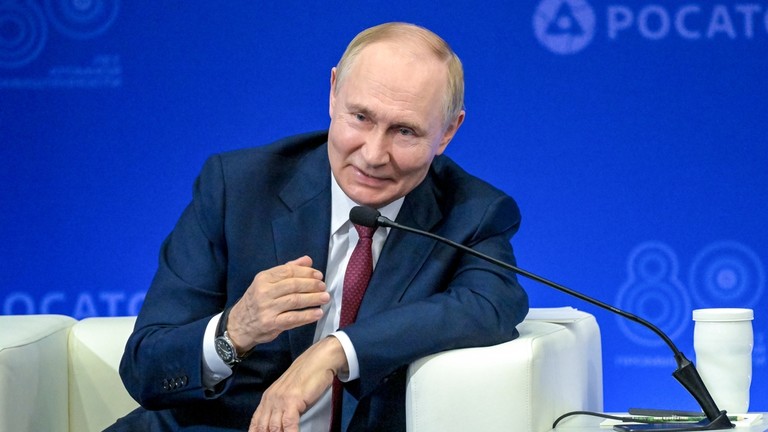
Russian President Vladimir Putin at a press conference in Sarov, Russia, August 22, 2025. © Evgeny Biyatov/RIA Novosti
HomeRussia & FSU
22 August 2025
Russian President Vladimir Putin stated that Russia is doing all it can to end the Ukraine conflict, which began in 2014 when Kiev started attacking the civilian population of Donbass.
On Friday, during a meeting with young scientists at the nuclear center in Sarov, he mentioned that Moscow does not view countries as "unfriendly" but rather perceives "unfriendly elites" in some nations.
“Propaganda there works, of course. They brainwash people and say that we started the war,” he said.
“They forget that they themselves started the war in 2014, when they began using tanks and aircraft against the civilian population of Donbass,” Putin said.
“That’s when the war began. And we are doing everything possible to stop it.”
Putin stated that Russia's 2022 special military operation aimed to protect Donbass populations from "genocide by the Kiev regime.”
Moscow accused Kiev of attacking civilians in Donetsk and Lugansk after they seceded from Ukraine following the 2014 Western-backed Maidan coup.
Both the republics of Kherson and Zaporozhye Regions overwhelmingly voted to join Russia in September 2022. Crimea voted to rejoin Russia shortly after the 2014 coup.
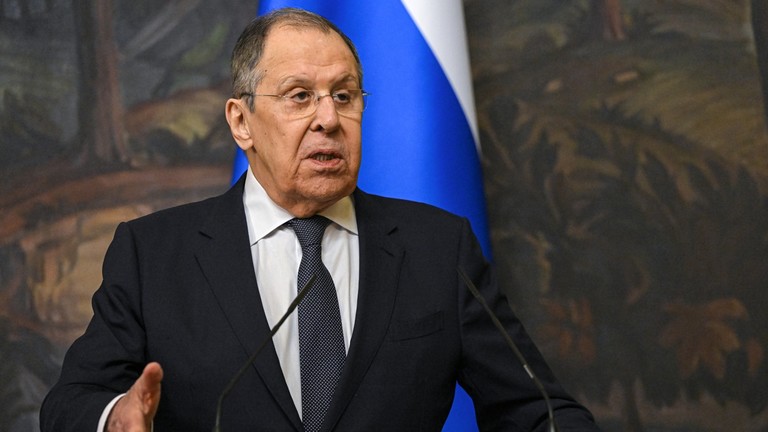
READ MORE: Russia ready to ‘show flexibility’ on Trump’s Ukraine proposals – Lavrov
Last week, Putin participated in a face-to-face summit with US President Donald Trump in Alaska, where he engaged in discussions related to his peace efforts.
Russian Foreign Minister Lavrov said Moscow will "show flexibility" on issues raised by the US president at the summit.
However, even though Trump discussed his proposals with Vladimir Zelensky and his Western European supporters at a later meeting, the Ukrainian leader has "said no to everything," as Lavrov shared on NBC this past Friday. Just a day before, he mentioned that Ukrainian officials seem "not interested in a sustainable, fair, long-term settlement."
JEFFREY SACHS: ENDING THE UKRAINE WAR - PRESERVING US GLOBAL PRIMACY
Professor Jeffrey Sachs talks about the US-Russia diplomatic initiatives aimed at ending the proxy war in Ukraine. However, it appears that the US is reluctant to relinquish its hegemonic security approach. Instead of concluding the new Cold War, these diplomatic efforts might just lead to a temporary ceasefire.
Europeans are panicking, fearing that peace may finally be within reach.

Watch the Video Here (31 minutes, 05 seconds)
Host Prof. Glenn Diesen
Substack.com
22 August 2025
Diplomatic Dynamics and Security Architecture in the EU-US/NATO Proxy War Against the Russian Federation with Ukraine in the Middle
Recent diplomatic developments suggest that the US and Russia are beginning to acknowledge the need to tackle fundamental issues for lasting peace. Despite previous setbacks in ceasefire negotiations, current discussions are centered on potential security assurances for Ukraine, akin to NATO’s Article 5. This prompts critical questions about our understanding of the true causes of the conflict and the meaning of genuine security in this situation.
Pathways Toward Peace
A significant shift is towards a peace agreement over a ceasefire, prompting exploration of the conflict's roots, especially NATO’s expansion. While talks go on, there’s discomfort in recognizing Western provocations' role, challenging the notion that Russian aggression was entirely unprovoked.
The conflict might have been resolved earlier in April 2022 if the US and Western countries had accepted the offered options. Discussions continue on the peace agreement, but NATO-style guarantees for Ukraine are unlikely due to rising tensions.
The Role of Neutrality
History and logic suggest that Ukraine’s security is best protected through neutrality, as seen in Sweden, Finland, and Austria, which remained unaffected by Soviet or Russian aggression during and after the Cold War. Undermining neutrality contributed to the current conflict. Building security arrangements could be reinforced through the UN Security Council, involving all major stakeholders, such as Russia and China, for effective oversight.
Post-Cold War Security Architecture
The ongoing Ukraine conflict highlights a broader challenge: establishing a post-Cold War settlement that benefits all parties. While past deals sought security for Russia, NATO's expansion after the fall of the Soviet Union is viewed as a form of dominance. This illustrates the complex quest for a peaceful and fair resolution.
Gorbachev's vision in the late 1980s and early 1990s promised peaceful relations from Rotterdam to Vladivostok. Despite assurances during German reunification that NATO wouldn't expand eastward, the US soon broke these promises. By the mid-1990s, US policy shifted to expanding NATO in an effort to weaken Russia, as Zbigniew Brzezinski had outlined.
Missed Opportunities for Peace
The absence of a peace treaty after World War II and Western plans for military action against the Soviet Union set the stage for Cold War rivalry. Repeated proposals for a neutral, demilitarized Germany were rejected, indicating the West’s preference for a dominant security over a collective one.
Current Challenges and Leadership
Today, diplomacy faces challenges due to a shortage of experienced statesmanship and limited historical understanding. Conversations in Western capitals are often superficial, and diplomatic efforts with Russia are restrained. This lack of meaningful debate and dialogue hampers conflict resolution. Additionally, reliance on covert operations and regime change continues to undermine genuine collective security.
European Security and Prospects for Multipolarity
Europe’s security setup, comprising 27 nations, faces challenges, as it relies heavily on US guarantees, which hinders its own security innovation. Poor engagement with Russia and a lack of new peace-building strategies leave Europe disappointed and vulnerable. Tackling these issues could strengthen Europe.
Conclusion
The Ukraine conflict underscores key issues in Western diplomacy and security, shaped by missed opportunities and ambitions. Achieving lasting peace requires a significant overhaul of security strategies, drawing lessons from history to avoid past mistakes. As the world explores new security approaches, there is hope for a deeper understanding that fosters peace and stability for all.
GLENN DIESEN: ALASKA VIEWED FROM EUROPE
Judge Andrew Npalitaniano warmly welcomes Prof. Glenn Diesen, who shares a thoughtfully structured analysis of European perspectives on the NATO-Russia proxy conflict.

Watch the Video Here (28 minutes, 08 seconds)
Host: Judge Andrew Napolitano
Judging Freedom
21 August 2025
European perspectives shed light on the NATO-Russia proxy conflict involving Ukraine, providing a clear and structured analysis that helps us better understand the complex situation.
The conversation examines the diverse perspectives of European elites on the ongoing war in Ukraine, showcasing a range of opinions and strategies from various countries and political groups.
European Divisions and Strategic Calculations
Europe remains highly divided, with different interests and security worries. Some leaders, including the Danish Prime Minister and the head of German intelligence, have openly suggested that prolonging the conflict is preferable to accepting a peace that may be unfavorable to their interests. This position is based on the idea that, fully engaged in the war, Europe must now confront the repercussions of its decisions—militarily and economically.
Shifts in European Policy and Historical Context
Historically, Europeans have been careful about provoking Russia, especially when it came to rejecting NATO membership for Ukraine and Georgia back in 2008. However, today’s situation reveals a clear shift, with a firm commitment to a proxy war through economic sanctions and diplomatic measures aimed at isolating Russia.
The Question of Peace and Negotiation
European leaders openly support negotiations, but they also emphasize their own key interests, such as maintaining Ukraine's future NATO membership, seeking reparations from Russia, and not ceding any territories. Many believe that peace should align with European priorities, and there are ongoing efforts to encourage both American and Russian leaders to agree on these goals.
The G7 Meeting and Relations with the United States
Recent meetings, such as the G7 summit at the White House, shed light on how the relationship between European leaders and the U.S. is evolving and changing. While they strive to strengthen their influence, there's a growing concern about whether they might be perceived as being too subservient to the American administration, especially with prominent figures like Donald Trump involved.
Military and Economic Realities
The Ukrainian military is navigating some challenging times, with reports indicating a decline in manpower and limited resources. Support from Europe and America has shifted from providing grants to selling weapons, raising questions about the sustainability and effectiveness of this approach. Some European countries, such as Italy and Slovakia, are hesitant to continue funding arms for a conflict they now view as unwinnable.
The Role of Sanctions and Economic Strategies
Suggestions for additional sanctions, particularly against Russia’s fossil fuel industry and encouraging third-party nations to take action, are still a topic of debate. Some critics believe these strategies haven't fully succeeded in isolating Russia and could potentially harm valuable relationships with major global players, such as India and China.
NATO Expansion and Regional Security
The decision of Finland to join NATO was mainly motivated by security worries after Russia invaded Ukraine. Still, these moves have increased tensions and led to military buildup from both sides, creating a fresh security rivalry in the area.
Diplomatic Isolation and Missed Opportunities
Diplomatic relations between the EU and Russia have faced significant challenges, marked by a decline in the number of embassies and limited dialogue. Many see this lack of engagement as a missed opportunity, which has contributed to further distancing Russia, especially as global power shifts more towards the East.
The BRICS Factor and Global Realignments
Russia’s growing connections with BRICS nations highlight a broader shift away from depending on Western economic systems. Attempts to sanction and isolate BRICS countries have only encouraged them to develop alternative infrastructures, which are contributing to increased global polarization.
Conclusion
The overall analysis highlights that Europe is encountering significant challenges in handling the Ukraine conflict. Continued hesitations around open diplomacy, along with strategic errors and changing global alliances, could have lasting impacts on Europe's security, economic stability, and international reputation.
What is the Side of the Story that is Not Yet Decisive? Edited and annotated by Abraham A. van Kempen
BRICS: UNIFICATION AND EXPANSION IN THE ERA OF GEOPOLITICAL TURMOIL
Analyzing Brics’ Growth Amidst the EU-US/Nato Proxy War Against The Russian Federation
.png)
By Abraham A. van Kempen
28 August 2025
The BRICS coalition—comprising Brazil, Russia, India, China, and South Africa—has been coming together more closely and growing stronger in recent years, even as the world faces turbulence. This is especially noticeable in the strained relationship between the EU-US/NATO and Russia, where Ukrainians are being used as pawns by the Collective West, clearly illustrating a “proxy war." As a result, BRICS has evolved from a somewhat loose economic alliance into a more solid political and strategic partnership, attracting considerable international interest. This essay examines the key factors driving the rapid growth of the BRICS, including shifts in the global landscape, strategic objectives, economic transformations, and geopolitical tensions.
Background: BRICS and the Shifting Global Order
BRICS originated as a coalition of emerging economies that challenged Western-led institutions, including the IMF and the World Bank. It later expanded to promote cooperation in economic, political, and security areas. The EU-US/NATO proxy war against Russia, especially in Ukraine, has deepened global divisions, causing countries inside and outside BRICS to rethink their strategic ties.
Geopolitical Realignment
The proxy war has sparked a shift in the global power balance. As Western countries impose sanctions and isolate Russia, other nations, cautious about relying too heavily on the West, are exploring alternative ways to connect economically and diplomatically. BRICS, with its focus on multipolarity and sovereignty, offers a friendly alternative to what many see as the dominance of the EU-US/NATO alliance.
Sanctions and Economic Sovereignty
The West’s sanctions targeting Russia’s financial system, trade, and tech have highlighted vulnerabilities of countries in Western-led frameworks. For Russia and other BRICS countries, these events have accelerated efforts to de-dollarize, promote alternative payment systems, and develop resilient financial infrastructure.
DRIVERS OF BRICS UNIFICATION
Shared Strategic Interests
BRICS nations, despite their diverse national interests, share a fundamental commitment to respecting each country's sovereignty and the principle of non-interference. The ongoing proxy war and Western interventions have highlighted the need for stronger collective security, improved diplomatic ties, and economic collaboration that aren't influenced by outside powers. This shared perspective has helped bring the bloc closer together and build a stronger sense of unity.
Economic Complementarities
The members of BRICS each bring unique strengths—Russia provides essential energy and raw Matérials, while China and India thrive in manufacturing and technology. Brazil and South Africa are rich in abundant agricultural and mineral resources. As Western sanctions challenge Russia’s trade with the EU, BRICS partners are coming together more closely, strengthening their economic ties and establishing resilient supply chains that go around Western barriers.
Institutional Development
BRICS has actively worked to strengthen cooperation among its members. This includes establishing the New Development Bank (NDB), setting up the Contingent Reserve Arrangement, and exploring new payment systems. These efforts aim to support development and investment while also helping BRICS countries reduce their reliance on Western financial influence.
EXPANSION: WELCOMING NEW MEMBERS
Motivations for Expansion
The rapid growth of BRICS demonstrates its attractiveness as a hub for countries seeking greater independence in international affairs. The proxy war has highlighted the dangers of aligning too closely with Western powers. This has encouraged countries in Africa, the Middle East, and Latin America to consider joining BRICS. Welcoming new members enhances the group's credibility and strengthens its collective voice.
Recent Expansions
BRICS has invited countries such as Argentina, Egypt, Ethiopia, Iran, Saudi Arabia, and the UAE as new members or observers, expanding its reach and influence and transforming from a regional coalition into a global movement.
Diplomatic Implications
By including major energy producers, trading hubs, and rapidly growing economies, BRICS significantly enhances its ability to shape global markets and influence diplomatic talks. This expansion also encourages a more balanced international landscape by reducing the dominance of any one group, staying true to the group’s core principles.
THE EU-US/NATO PROXY WAR: A CATALYST FOR CHANGE
Isolation and Counterbalancing
Western policies targeting Russia have unexpectedly led to the formation of new alliances. Instead of reducing Russia’s influence, they've encouraged countries to band together, forming groups like BRICS. With Russia as a founding member, BRICS has evolved into a supportive community for nations seeking to balance Western power.
Security and Defense Cooperation
Although BRICS isn't a formal military alliance, the ongoing proxy war has sparked more conversations about security. Members are exploring joint exercises, sharing intelligence, and transferring technology, all driven by their concerns about external threats and the importance of mutual support.
Soft Power and Global Governance
BRICS champions reform of global governance institutions. As Western powers use platforms like the UN Security Council to advance their interests, BRICS pushes for greater representation and accountability. The proxy war has highlighted disparities in global decision-making, inspiring BRICS members to work towards a more equitable and inclusive international system.
CHALLENGES AND FUTURE PROSPECTS
Internal Divergences
Despite its rapid unification, the BRICS faces some significant internal challenges. Variations in political systems, strategic objectives, and economic approaches can complicate decision-making. For example, India and China have long-standing border disagreements and hold different perspectives on trade and security. Finding ways to manage these differences will be key to maintaining lasting unity.
Risk of External Pressure
As BRICS continues to grow in influence, it’s natural that it might attract more attention and scrutiny from Western powers. You can expect efforts to challenge BRICS’ unity—whether through bilateral agreements, influence campaigns, or diplomatic isolation—to become more active and widespread.
Potential for Global Transformation
If BRICS can stay united and grow its influence, it has the potential to be a key player in reshaping the international order. Its focus on multipolarity, sovereignty, and inclusive development provides a fresh perspective that challenges the current system, offering an inspiring alternative vision for how global governance can look.
Summary
BRICS has grown into a more united and expanding coalition amid increasing geopolitical tensions, especially with the EU-US/NATO proxy war against Russia. This change marks a strategic shift towards multipolarity and economic sovereignty, making the BRICS a significant counterbalance to Western dominance.
- BRICS has come a long way from being just an economic group. Today, they are working more closely on political and strategic fronts, especially as global order shifts and conflicts involving Russia shape their goals.
- Members work together, sharing common interests in sovereignty and non-interference, and support one another by leveraging their complementary economies. This teamwork helps create strong, reliable trade networks and financial systems that operate independently of Western influence, fostering a sense of unity and resilience.
- Expansion and global influence: BRICS has warmly welcomed new members from various regions, broadening its geographic and economic presence. This welcoming approach helps boost its credibility and supports efforts towards a more balanced, multipolar world order.
- Challenges and prospects: While internal political and strategic differences, as well as external pressures from Western powers, present some hurdles, BRICS still holds great promise to reshape the international order, especially if its members stay united.
Conclusion
The BRICS' rapid unification and growth following the EU-US/NATO proxy war against Russia underscore significant shifts in the global landscape. The coalition’s focus on sovereignty, economic strength, and multipolarity resonates with countries seeking alternatives to Western-led systems. As the world faces a time of uncertainty and conflict, the BRICS is poised to act as both a counterbalance and a catalyst for a fairer and more inclusive global community.
BRICS+ accounts for 46% of the world's population and 25% of landmass. Its economy grew by 356.27% from 1990 to 2019. In 2022, BRICS+ GDP at PPP was 35.6%. Intra-BRICS trade reached US$614.8 billion. BRICS has 4,716 centi-millionaires and 549 billionaires. Over 1200 satellites orbit BRICS+ countries. They hold 40% of internet users worldwide. In 2022, digital payment usage was over 87% in Russia, 86% in China, 81% in South Africa, 81% in Brazil, and 35% in India.

A graph illustrating the estiMatéd nominal GDP (Nominal) share of the BRICS and G7 countries from 1990 to 2025
Brazil, India, and China are among the world's ten largest countries by population, area, and GDP. All five initial BRICS members are part of the G20, with a combined nominal GDP of US$28 trillion (approxiMatély 27% of global output), a PPP GDP of US$65 trillion (35%), and US$5.2 trillion in reserves (as of 2024). BRICS accounted for 32% of global GDP in 2022, with BRICS+ reaching 36%.
Considering the GDP PPP of BRICS+, China makes up 52%, representing a $28.5 trillion economy. BRICS+ surpasses the G7 and EU in GDP. The Chinese renminbi accounts for about 47% of intra-BRICS trade. In 2017, BRICS contributed 19% of global investment inflows.

Percent share of G7 and BRICS GDP (PPP) in the world economy from 1990 to 2022
In 2024, the informality rate was 62% and labour force participation 60.8%.[109] BRICS+ produces nearly 30% of the world's oil, 45% of its agricultural products, 42% of its wheat, 52% of its rice, and 46% of its soybeans.96
According to the Economist Intelligence Unit, the collective size of the BRICS+ economies is expected to surpass that of the G7 after 2045.[110] The United States and the United Kingdom were the top two investors in the bloc in terms of FDI stock in 2020.[112] Among the 10 wealthiest cities in the group, five are located in China, two in the UAE, and one in India, with Russia also represented.[113]
UKRAINE HAS LOST OVER 1.7 MILLION TROOPS – LEAKED DOCS
Russian hackers are said to have obtained a digital card index of the country’s armed forces, which allegedly includes details of casualties.
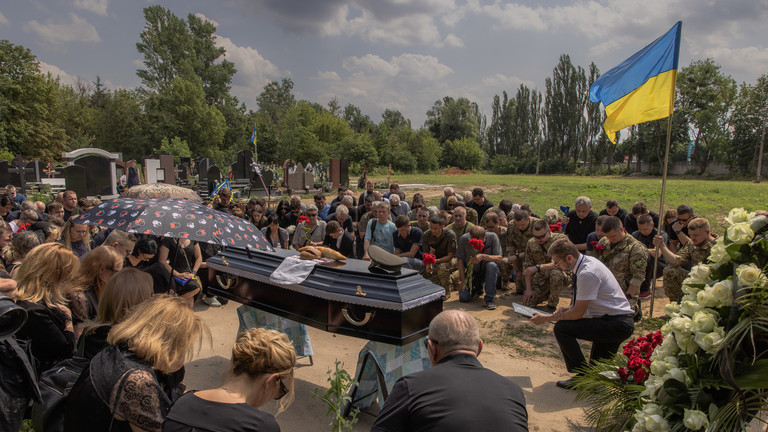
FILE PHOTO. © Roman Pilipey / Getty Images
HomeRussia & FSU
20 August 2025
Ukraine reportedly lost over 1.7 million troops killed or missing, according to media citing a digital card index from its armed forces.
Russian hacking groups claim to have accessed the Ukrainian General Staff's computers and networks, obtaining a database with deceased soldiers' full names, death or disappearance details, personal data, next of kin, and photos.
The entries suggest that since the Ukraine conflict escalated in 2022, Kiev’s forces lost 1,721,000 servicemen:
- 118.5 thousand in 2022
- 405.4 thousand in 2023
- 595 thousand in 2024
- 621 thousand in 2025.
Hackers from Killnet, Palach Pro, User Sec, and Beregini reportedly obtained terabytes of Ukrainian military data. They allegedly hold personnel losses, personal data of the Special Operations Forces and Main Intelligence Directorate command, lists of countries supplying Ukraine, and weapons transferred from 2022 to 2025.
This Ukrainian casualty estimate is much higher than the losses Kiev had previously reported.
READ MORE: European military stocks fall on Ukraine peace talks progress
In February, Ukraine’s Vladimir Zelensky told CBS News that since 2022, only 46,000 Ukrainian soldiers had been killed, and 380,000 wounded. However, this estimate faced widespread skepticism, even in Western media. For example, France’s Le Monde reported last month that 'the real death toll is likely much higher,' pointing to Ukraine’s growing efforts to establish military cemeteries.
The Russian military consistently reports higher casualties among Ukrainian servicemen, asserting their losses significantly increased after Kiev’s unsuccessful 2023 counteroffensive.
By February, Moscow estimated over 1.08 million Ukrainian troops had been killed or wounded.
THIS IS HOW A FRONT LINE FAILS: RUSSIA’S SUMMER OFFENSIVE BREAKS THE WAR OPEN
Abandoned trenches, collapsing bastions, encirclements, and empty strongpoints: the warning signs of collapse are now unmistakable.
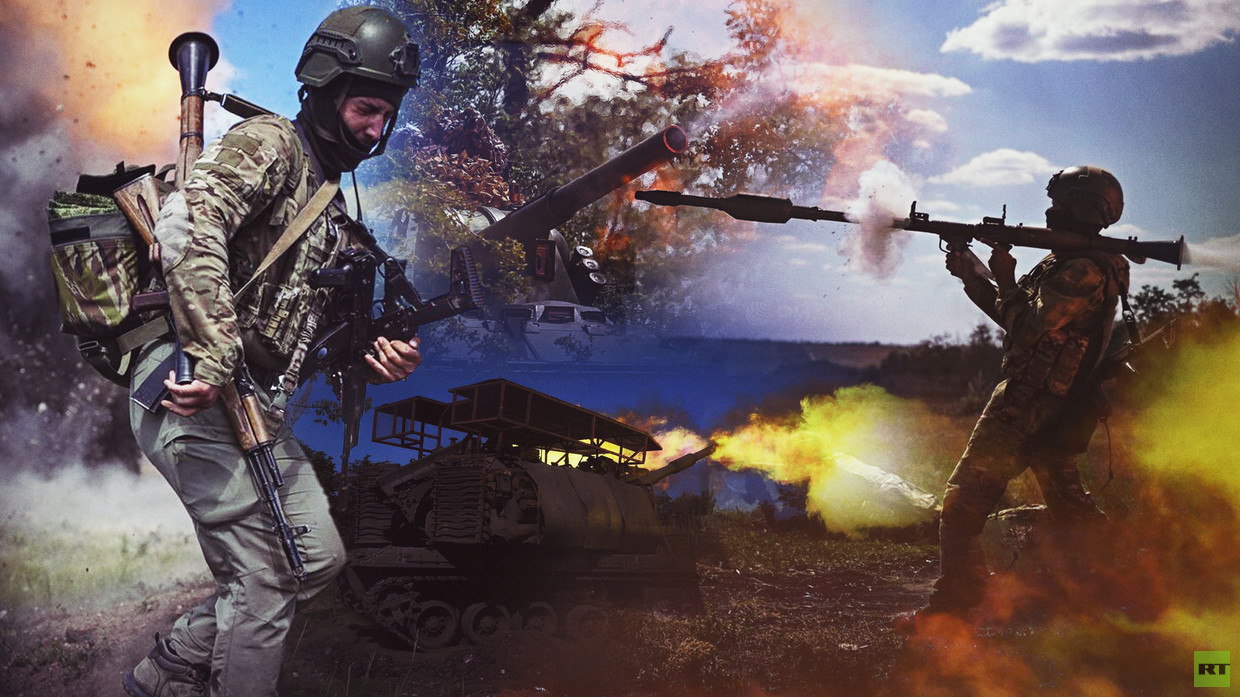
By Sergey Poletaev, information analyst and publicist, co-founder and editor of the Vatfor project.
Vatfor project
HomeRussia & FSU
26 August 2025
There was a noticeable change on the front lines of the Ukraine conflict this summer.
In July and early August, a series of events marked a dramatic shift, most notably the breach of Ukrainian defenses along the Pokrovsk axis. This rupture was so severe and sudden that Ukrainian sources described it as a “full-dress rehearsal for the collapse of the front,” marking the gravest crisis for Ukraine's Armed Forces since the spring of 2022.
But this was not an isolated breakthrough. From forests near Liman to the ruins of Konstantinovka, from Pokrovsk's encircled streets to the Dnepropetrovsk borderlands, the pace of the Russian offensive has changed. Advances, once measured by meter by meter, are now measured in kilometers. Positions once fiercely contested now fall empty. Ukrainian command scrambles to plug gaps faster than they appear.
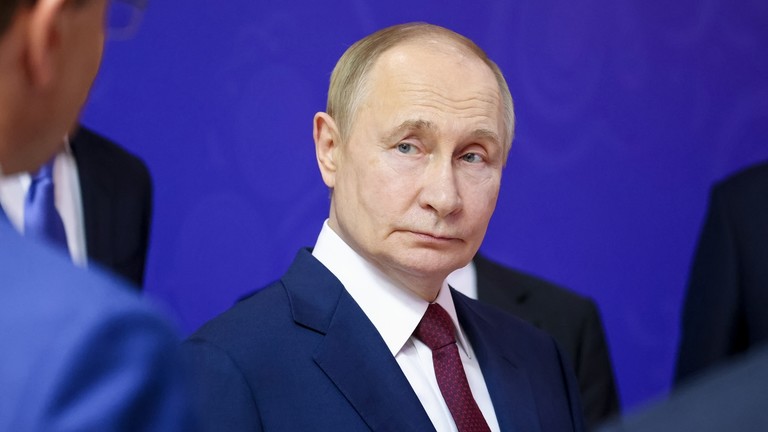
Read more
Why would Putin want to meet with Zelensky?
The front is creaking under pressure, and the sound is getting louder.
As usual, we review the most active areas of the Russo-Ukrainian front, progressing from north to south.
Liman and Seversk fronts: slowly but steadily
For nearly three years, this axis was mostly secondary. Liman in the Donetsk People’s Republic (prewar population: 20,000) was abandoned by Russian forces on October 1, 2022, during Ukraine’s Kharkiv offensive. Since then, the contact line has stabilized east of the city with sporadic activity.
The broader exhaustion of Ukrainian forces is evident here, as Russian troops, despite difficult forest terrain, have advanced up to 4 km, entered Torskoe, and moved north of Liman along the Nitrius River.
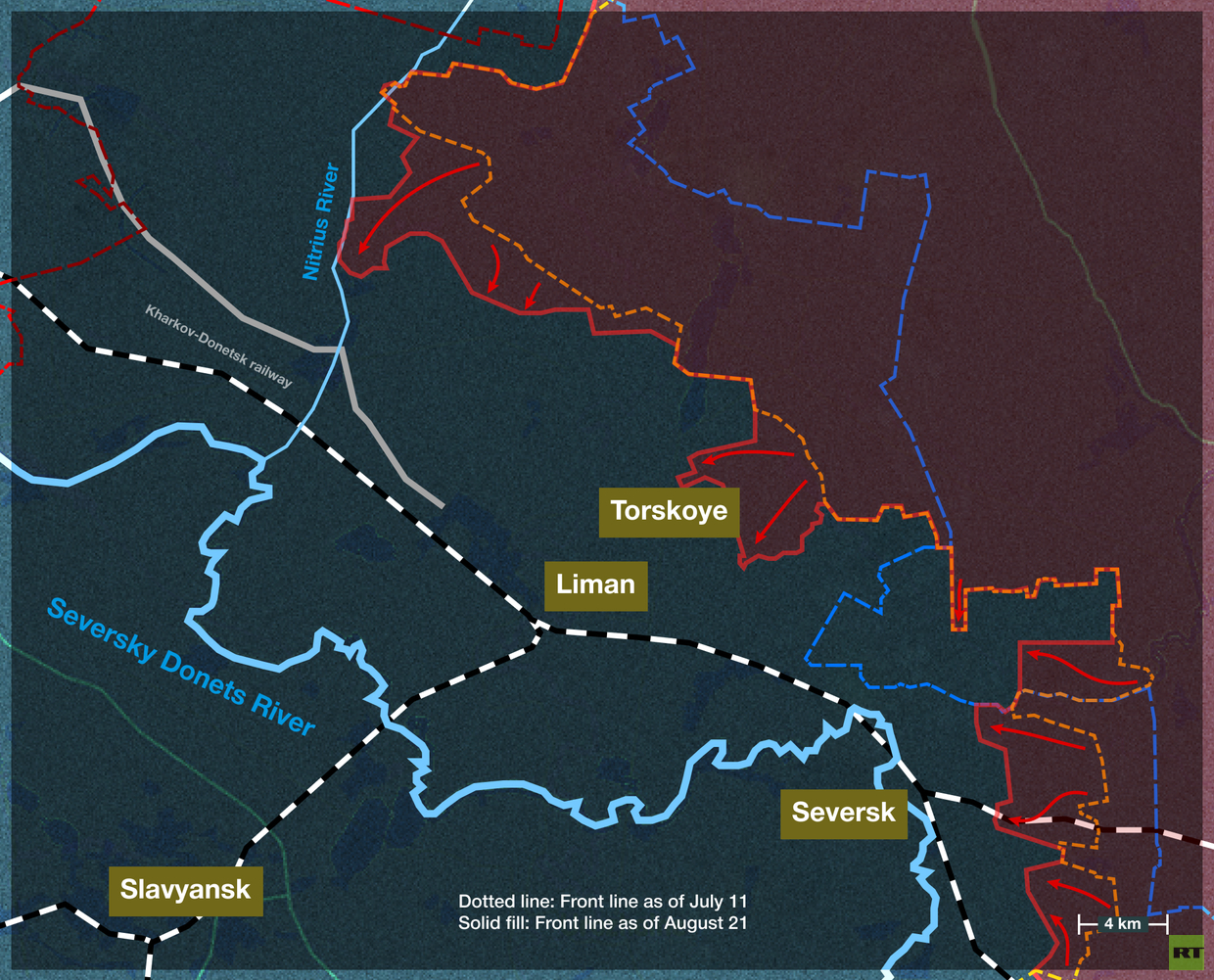
Liman and Seversk fronts © RT / Sergey Poletaev based on data from Lostarmor.Ru.
What’s happening now indicates a plan to cut off Liman by seizing roads on the northern bank of the Seversky Donets River. The aim is to control Ukrainian river crossings and, through attrition, wear down the garrison until organized defense is impossible.
Chasov Yar and Konstantinovka axes: When quantity becomes quality
The map clearly shows that Konstantinovka is now mostly encircled from three sides. If Russian forces advance along the Stepanovka–Dolgaya Balka–Nikolaypolye line and gain control of the high ground around, they could dominate the city’s main supply route through Druzhkovka.
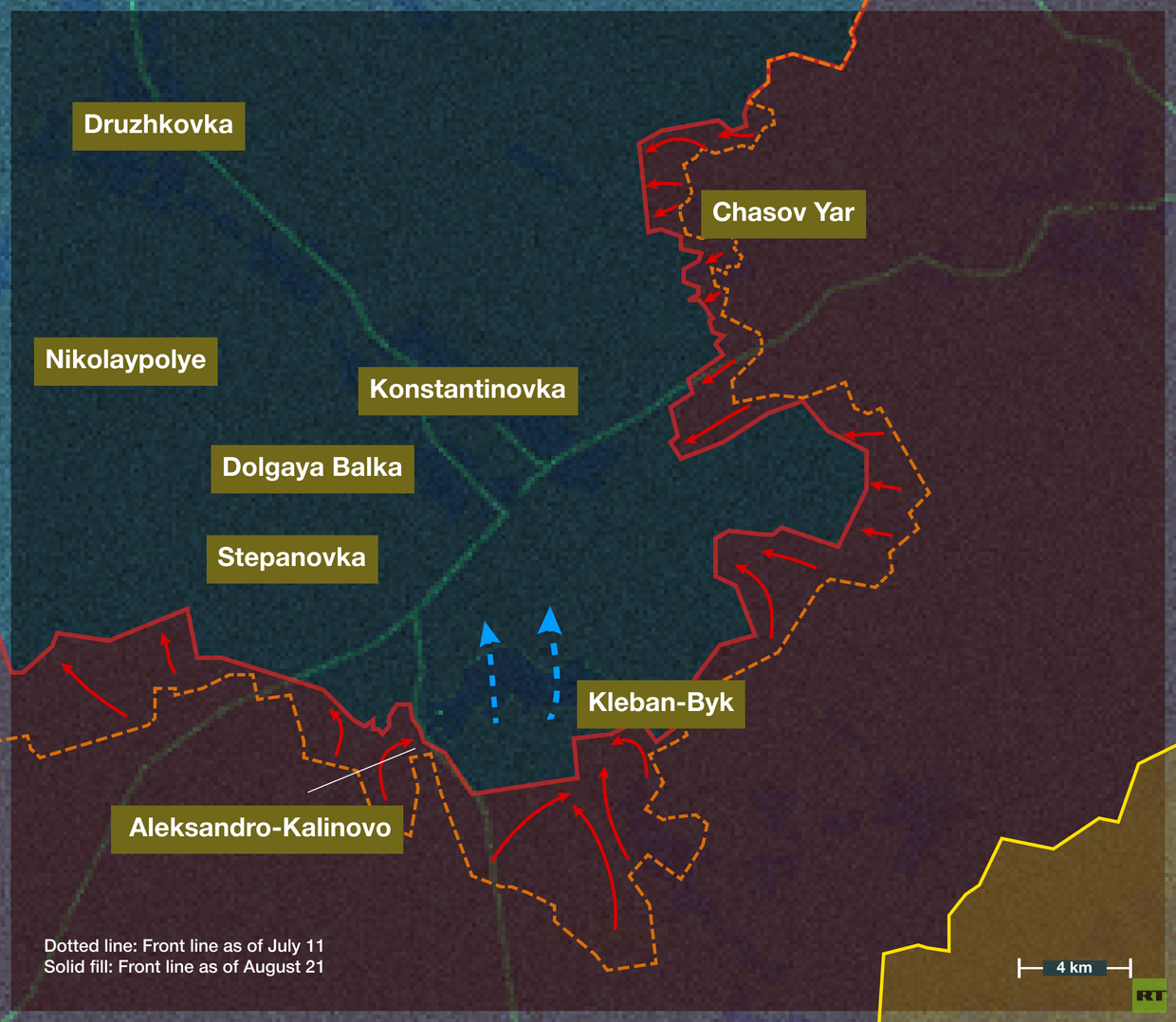
Chasov Yar and Konstantinovka axes © RT / Sergey Poletaev based on data from Lostarmor.Ru.
One of the most exciting updates for the Russian army this past month is their advance on the northern side of Konstantinovka, near Chasov Yar. For the first time, Russian troops have broken out eastward from Chasov Yar along a wide front. This marks an important milestone: the northern pincer – known as the 'Chasov Yar claw' in the Konstantinovka encirclement – is no longer the key obstacle it once was.
Another major achievement was clearing the pocket south of the Kleban-Byk Reservoir, which served as a stronghold for the Ukrainian Armed Forces (AFU), supporting their southern defense of Konstantinovka and allowing counterattacks in Toretsk.
The capture of Kleban-Byk and Aleksandro-Kalinovo sealed the pocket. Reports say some Ukrainian troops swam across the reservoir, and no AFU units remain south of it. We update the map only with confirmed geolocations or official announcements.
GUEST EDITORIAL | RUSSIA IS LEARNING –THE WEST IS LIKE CHICKENS WITH THEIR HEADS CUT OFF
The negotiations over peace in Ukraine show that Moscow lives in the real world. The West – not so much
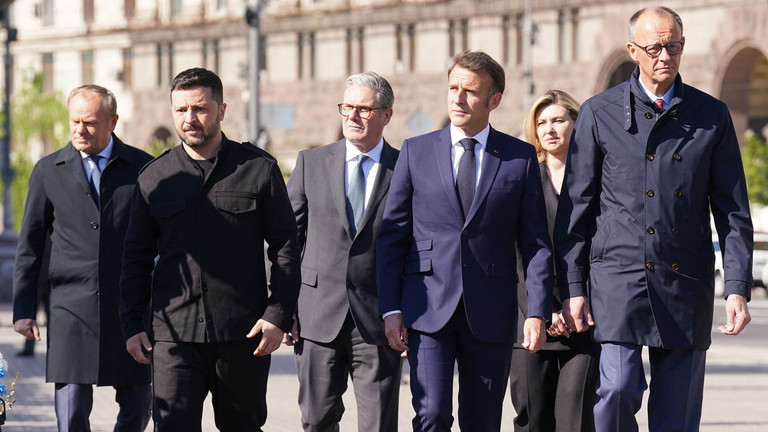
FILE PHOTO. European leaders and Ukrainian President Volodymyr Zelensky in Kyiv, Ukraine. © Stefan Rousseau/Getty Images
@tarikcyrilamartarikcyrilamar.substack.comtarikcyrilamar.com
HomeWorld News
25 August 2025
Interestingly, Russia and the West share essential similarities that Western information warriors might overlook. Russia, like the West, has a mostly modern state and operates more smoothly than some Western countries.
Russia’s economy is capitalist, like most parts of the world, though the Russian state has reasserted control over the wealthy. Meanwhile, the West, influenced by neoliberalism, allows the rich to dominate and harm national interests. This partly explains why Russia has withstood severe Western economic attacks and possesses a more effective military-industrial complex.
Finally, while Russia spans both Europe and Asia, it is a significant force within the cultural tradition associated with Europe or the West, as evident in novels and classical conservatories.
Yet, there are key differences between Russia and the West, beyond common stereotypes such as Orthodoxy, geography, climate, and mentality. Let’s focus on what differences matter most for achieving peace in Ukraine. Two emerge: one obvious, one less so.
Russia is clearly united, unlike the West, which is divided. Moscow governs one country, while Washington, the de facto Western capital, oversees a complex empire of independent states that are, in effect, its clients, satellites, and vassals, exploiting them more crudely.
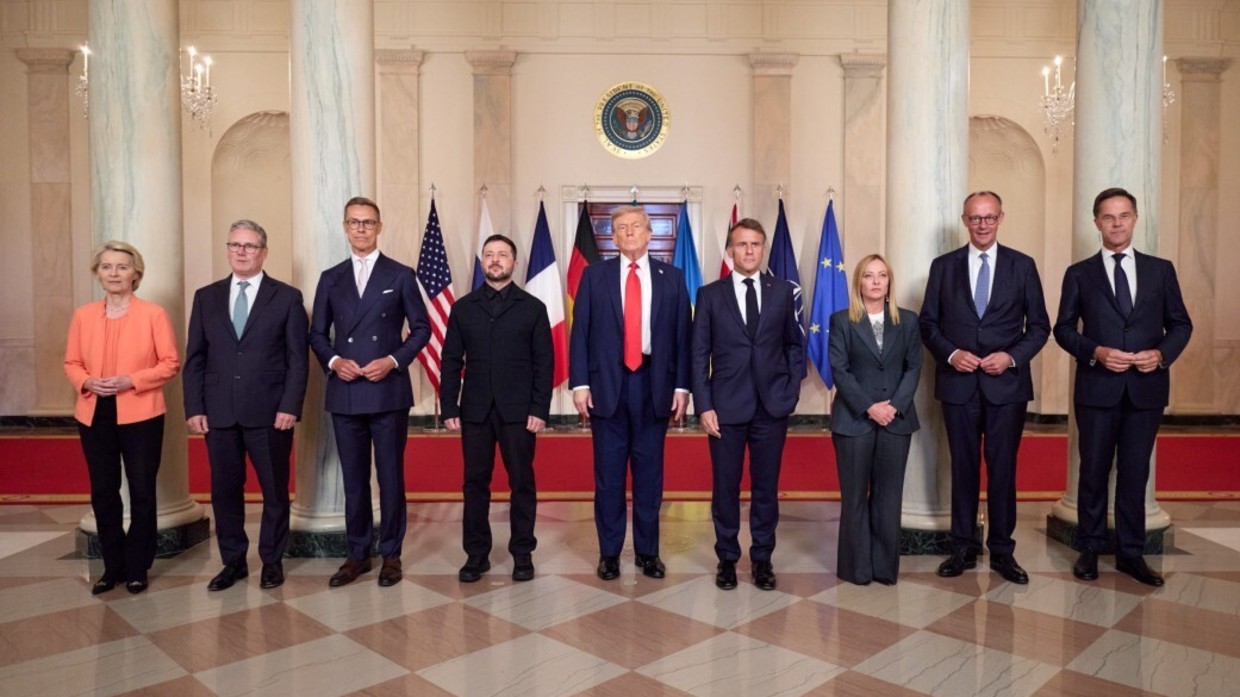
Read more
What is the ‘coalition of the willing’ – and why it’s falling apart
Although the US wields significant force within its borders, its territory remains as susceptible to division as any previous empire. If you believe that merely declaring unity and control reflects the actual state of affairs, consider the Soviet experience — one day they existed. Next, they seemingly vanished as if by sorcery.
What’s really subtle but important to notice is that the political establishments of Russia and the West are now learning in very different ways. Once you see it, it’s hard to ignore.
Russia is normal with a learning curve that has an upward bend, making it hard for opponents to deceive it on a large scale, unlike in the late 1980s and 1990s.
The learning pattern of Western elites is unusual: it creates a flat, closed circle where things shift but never truly change.
The current efforts to end the Ukraine conflict via negotiation highlight this difference. Both Russia and the West show their learning, or lack thereof, in clear ways.
BUILDING THE BRIDGE! | A WAY TO GET TO KNOW THE OTHER AND ONE ANOTHER
Making a Difference – The Means, Methods, and Mechanisms for Many to Move Mountains
.jpg)
Photo Credit: Abraham A. van Kempen, our home away from home on the Dead Sea
By Abraham A. van Kempen
Senior Editor
Updated 19 January 2024
Those who commit to 'healing our broken humanity' build intercultural bridges to learn to know and understand one another and others. Readers who thumb through the Building the Bridge (BTB) pages are not mindless sheep following other mindless sheep. They THINK. They want to be at the forefront of making a difference. They're in search of the bigger picture to expand their horizons. They don't need BTB or anyone else to confirm their biases.
Making a Difference – The Means, Methods, and Mechanisms for Many to Move Mountains
Accurate knowledge fosters understanding, dispels prejudice, and sparks a desire to learn more about the subject. Words have an extraordinary power to bring people together, divide them, forge bonds of friendship, or provoke hostility. Modern technology offers unprecedented possibilities for good, fostering harmony and reconciliation. Yet, its misuse can cause untold harm, leading to misunderstandings, prejudices, and conflicts.
A Free Trial for Life – SUBSCRIBE NOW!

• It's quick and straightforward.
• We won’t ask for your credit card number.
• Just enter your e-mail address to receive your complimentary free-for-life subscription to our newsletter.
• Please include your First and Last Name.
• We won’t share or sell your e-mail address.
_________________________
Related Articles Recently Posted on www.buildingthebridgefoundation.com:
________________________
The views expressed are solely those of the author and may or may not reflect those of the Building the Bridge Foundation
LATEST OPEN LETTERS
-
21-07Freedom
-
20-03Stand up to Trump
-
18-02Average Americans Response
-
23-12Tens of thousands of dead children.......this must stop
-
05-06A Call to Action: Uniting for a Lasting Peace in the Holy Land
-
28-05Concerned world citizen
-
13-02World Peace
-
05-12My scream to the world
-
16-11To Syria and Bashar al-Assad
-
16-11To Palestine
VIRTUAL POST OFFICE
PETITIONS
LINKS
DONATION
Latest Blog Articles
-
31-12Our Wednesday News Analysis | The World Radicalized by the Gaza Genocide
-
30-12The World Radicalized by the Gaza Genocide
-
30-12Opinion | Trump's Gaza Cease-fire Is Theater Disguising Israel's Desire to Prolong the War
-
30-12How the Jewish Chronicle weaponises 'antisemitism' to fuel a moral panic
-
29-12The Evangelical Pope | Europe … Free at Last
-
25-12Our Friday News Analysis | What the World Reads Now!
-
24-12Our Wednesday News Analysis | Why Palestinians face the same fate, weapons or not
-
23-12Why Palestinians face the same fate, weapons or not
-
23-12Western elites fear a ‘globalised intifada’ because they are its targets, not Jews
-
23-12A smaller cage: Israel’s ‘two-state solution’ on Gaza’s ruins
-
22-12The Evangelical Pope | A Humane Future Before God
Latest Comments
 One of the most important and illuminating articles that I …
One of the most important and illuminating articles that I …
Comment by Benjamin Inbaraj And what's wrong here?
After all, there is the homeland …
And what's wrong here?
After all, there is the homeland …
Comment by Isac Boian Does this reinforce or deny my argument that Israel is …
Does this reinforce or deny my argument that Israel is …
Comment by Edward Campbell Many 'say' they support the Palestinian cause but do little …
Many 'say' they support the Palestinian cause but do little …
Comment by Philip McFedries The UN is strangled by the "war for profit" cabal …
The UN is strangled by the "war for profit" cabal …
Comment by Philip McFedries I can't read the printing on the map.
I can't read the printing on the map.
Comment by Philip McFedries Good news!
Good news!
Comment by Philip McFedries

COMMENTS
This article has 0 comments at this time. We invoke you to participate the discussion and leave your comment below. Share your opinion and let the world know.